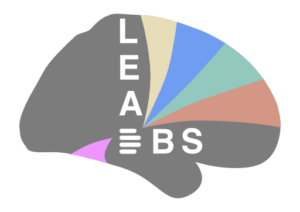-
AuthorPosts
-
02/27/2019 at 4:05 PM #6788
maria
ParticipantHello everyone,
I am really new to Lead DBS, and I have been trying to follow the walkthrough video to try it out with some DBS postoperative CT images. However I keep getting the same error when I try to run the Reconstruction of the electrode trajectories with all the methods provided (even varying the mask window size) I am not able to get the reconstruction automatically. I keep getting a warning that says that images do not have the same size and orientations, and that the mask is out of bounds.
But which images should I check specifically to have the same size? I am not sure this is the problem, but just to be check if I am doing things correctly.
I have try to do it manually, however it would be great if the automatic detection could work.Thank you for any advice,
Maria
02/27/2019 at 4:20 PM #6789ningfei
KeymasterHi Maria,
The warnings could be safely ignored I guess. For the mask out of bounds error, you may try to set the Target to Manual and see if it works. Besides, which method did you use for reconstruction? Is it PaCER? Usually it simply works.
Best,
Ningfei02/27/2019 at 4:31 PM #6790maria
ParticipantHi Ningfei!
Thank you so much for the quick reply. I have tried PaCER, TRAC/CORE, and Refined TRAC/CORE with different mask window size, from 5 to 15, but none of them work. I have only been able to localize them manually.
Is there anything else I could check to see why I can only do it manually? Is there any requirement regarding the images or the electrode positioning?
Thank you,
Maria
02/27/2019 at 4:35 PM #6791ningfei
KeymasterHi Maria,
I meant you can use the TRAC/CORE or Refined TRAC/CORE method, but set the Target to Manual, click the electrodes location, then LeadDBS will do the rest. Did this work for you?
Best,
Ningfei02/28/2019 at 10:14 AM #6805maria
ParticipantHello Ningfei,
Thank you for your suggestion. Changing to the options you gave me doesn´t givean error, and it is able to reconstruct them, however when I have to localize them I have to move a lot the electrodes for them to match the images. They are located in the thalamus so I am not sure if that could be the reason why it doesn´t detect them as easily.
I have another question regarding the same topic. I am trying to do the same with SEEG electrodes, and although it doesn´t give any errors, when I have to localize them, it seems like I can not see correctly any of the artifacts and I am unable to find them. I know the toolbox is not specialized in SEEG electrodes, but I was wondering if it could be due to the reconstruction not being optimal due to not having the correct electrode model, (which could I generate myself somehow?)
Thank you again,
Maria
02/28/2019 at 11:14 AM #6806ningfei
KeymasterHi Maria,
I see…This actually could be the reason why it’s not easy to detect them. Then maybe only Manual method could help. For the SEEG, you probably also need to use the Manual method or the Slicer Manual method. Correct eletrode model matters, but not so important for the reconstruction. Which model do you have?
Best,
Ningfei02/28/2019 at 11:25 AM #6807maria
ParticipantHi Ningfei,
Thank you for your fast response! The electrodes implanted for SEEG are ADTECH, and I was trying to use the SDE-08 S8 electrode model, for 12 electrodes. I read that it should be relatively simple to generate a new model, however I am not sure how to do that. Do you know where I could find some information about that?
We were hoping to do the detection automatically, but for now I will try to do it with the Manua method :)
Thank you,
Maria
02/28/2019 at 3:39 PM #6815ningfei
KeymasterHi Maria,
I guess there’s no detailed manual for now on how to create your own electrode model…It’s usually not that difficult, but one needs to be very exprienced in matlab and leaddbs to do that. Those SDE ones were what I created for our collaborator. So your electrodes are similar to SDE-08 S8?
Best,
Ningfei03/05/2019 at 4:28 PM #6882maria
ParticipantThank you for your reply Ningfei.
I am not really sure they are that similar, but I wanted to see if it was able to detect the SEEG electrodes anyway. I have not been able to detect the SEEG electrodes in the Manual method, since it is quite hard to keep track with the 12 electrodes and try to select different ones each time… I am not sure if there is any work around that but it would be really helpful.
Cheers,
Maria -
AuthorPosts
- The forum ‘Support Forum (ARCHIVED – Please use Slack Channel instead)’ is closed to new topics and replies.

